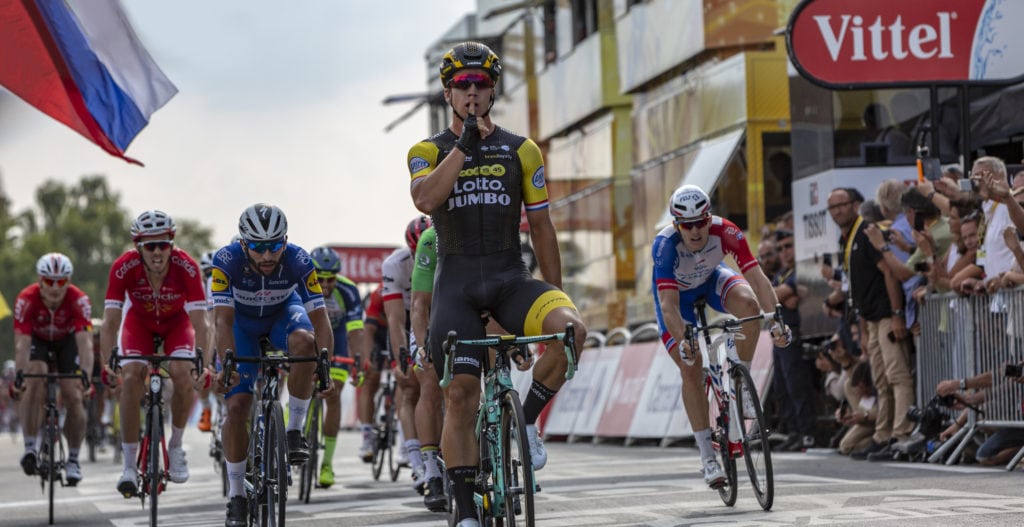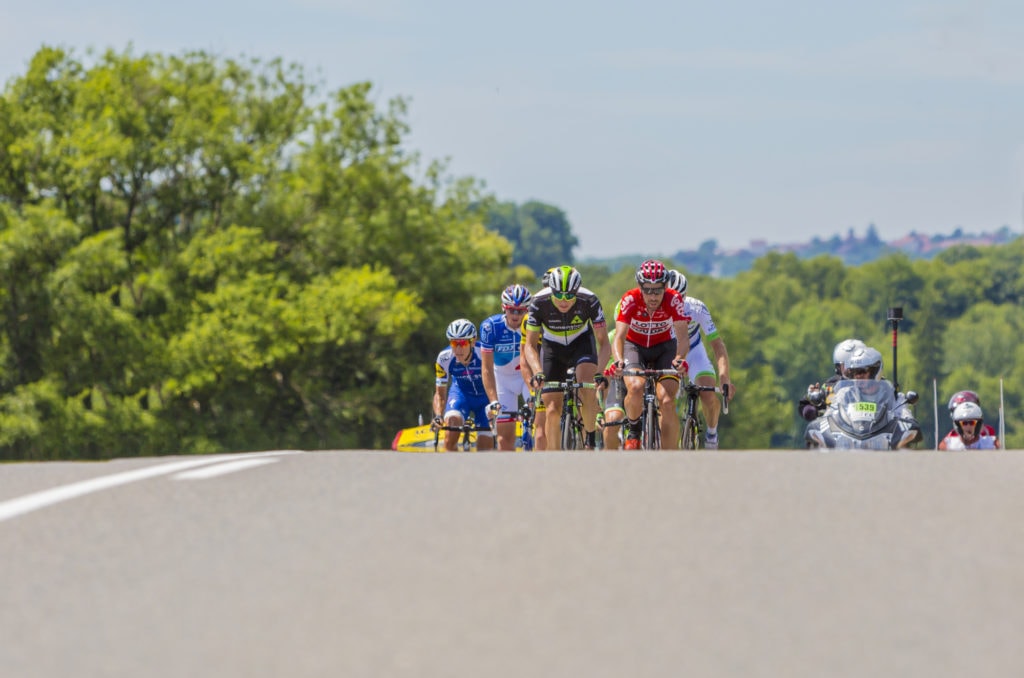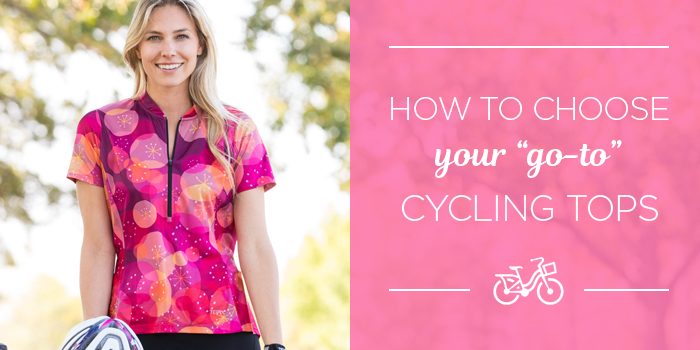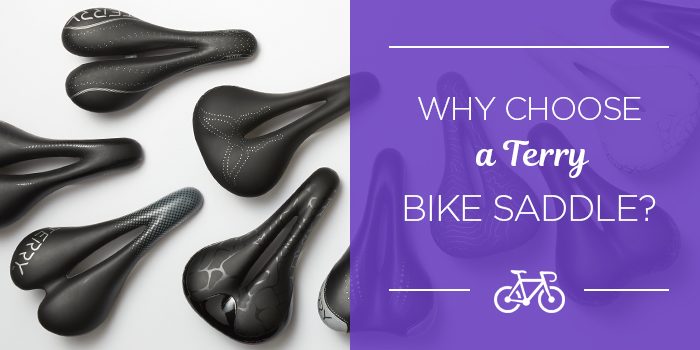It won’t be easy, but seriously, here’s how you win the Tour de France.
It’s the rider who completes the course in the shortest time that will win the Tour de France, of course. Here’s how you could accomplish that, if you got the chance.
The first step is the easiest: Get yourself into the top ranks of the pro bike racing circuit. Sorry, but after that it’s all going to be uphill.
Tour de France riders are an inspiring bunch, remarkable for the talent and dedication it takes just to get to the starting line.
Many of these riders are very visible in the early stages, which tend to be flat, or only a little hilly, with dramatic sprint finishes, and lots of intermediate sprints offering points for the green jersey contenders.
The sprinters and more powerful riders tend to shine in these early stages, and it’s possible for them to accumulate a good time advantage over some of the pre-race favorites. However, these guys never actually win the Tour de France. Why is that?
In the second week of the race the hills become steeper and longer, with a few mountains thrown in for the polka dot jersey competition, but still lots of sprint points up for grabs.

Peter Sagan winning a sprint stage of the Tour de France, with Greg Van Avermaet wearing yellow a few places behind.
Photo credit: vectornews.eu
In these stages the “puncheurs” come to the fore. These riders can maintain speed on the flats and through multiple short steep hills along the route, and still have energy for an uphill sprint at the end. Slovakian rider Peter Sagan is a great example. He dominated the points competition for five previous Tours, and now a sixth.

Col du Glandon, France – 23 July 2015: Tour vehicles make their way along the road to Col du Glandon in the Alps, during stage 18 of the Tour de France 2015.
The mountains are the key to the big stage races like the Tour de France, Giro d’Italia, Vuelta d’Espana, and many others. Since it all depends on finding opportunities to open time gaps on the other riders, and being able to defend your advantage, riders who excel at the kind of bike riding that allows larger time advantages are always the ones to win the Tour de France.
That would be the “grimpeurs,” the mountain climbing specialists.
Let’s look at how a grand tour stage race works.
How to Win the Tour de France – Sprint stages: spectacular finishes for points and glory

Chartres, France – July 13, 2018: Dutch cyclist Dylan Groenewegen celebrates his victory in Chartres after the longest stage, Fougeres-Chartres, of the Tour de France 2018.
In the early sprint stages, the pure sprinters finish at the front of the race, bursting out from a massive peloton of riders at the very end. This year we saw young Columbian rider Fernando Gaviria snatch two convincing sprint stage victories. Sagan and Dutch rider Dylan Groenevegen also grabbed a couple of stages each. They rarely cleared the other riders by more than a few seconds. Most times the G.C. riders (contenders to win the Tour de France General Classification) will be somewhere in the peloton, having been paced along by their team mates.
Because it’s impossible to determine individual finish times when there are a hundred or more all crossing the line in a big bunch, everyone in the peloton is given the same time as the rider at the front. So, as a future winner of the Tour de France, your job for those early sprint stages is simple – be in the peloton.
How to Win the Tour de France – Hill stages: breakaways and surprises

Mailleroncourt-Saint-Pancras, France – July 5, 2017: The breakaway approaching La Planche des Belle Filles during stage 5 of Tour de France 2017.
On the rolling and hilly stages in the middle of the race, it’s common for a breakaway group to contest the finish. They may clear the peloton by a couple of minutes or so.
If the breakaway includes only riders who are not considered G.C. threats, the peloton won’t waste energy trying to catch them and they may open a considerable time gap, but it won’t matter later on.
Again, your mission is to stay safe in the peloton.
How to Win the Tour de France – Mountain stages: dramatic scenery, decisive moves

Col de Manse, France – July 16, 2013: Portuguese cyclist Rui Alberto Costa completes the ascent to Col de Manse, on his way to winning stage 16 of 100th edition of Le Tour de France 2013.
On a stage crossing several summits, a few climbing specialist team mates will pace and assist the team leader to keep him strategically placed and conserve his energy. When the moment is right, maybe on the last climb, or earlier if key opponents seem weak, or some strategic opportunity appears, the leader may attack and put everything into opening a gap that rivals can’t bridge.
The Sky team supporting Britain’s Chris Froome has done this consistently through all the Tours since 2012. In the key mountain stages Froome has been ever present, dueling with other contenders, smacking the hammer down, or grimly hanging on to limit losses – always with team members giving it their all to keep him in the right place.
Froome has had the support of Australian Richie Porte and Welshman Geraint Thomas for a few seasons. As we see in this year’s Tour, Thomas is in yellow himself and is a strong contender in his own right. Porte crashed out in the tough Roubaix stage, but was on the short list of race favorites for his new team.
Over the course of several mountain stages the strongest climbers can open up serious time gaps. Even if they gain only a few seconds per stage, it might add up to a minute or two cumulatively, and at the top level that becomes extremely hard to overcome.
That makes it clear: to win the Tour de France you have to be a climber, no way around it.
And you have to have a great team. No way around that either.
One more skill that will help you win the Tour de France: time trials

Beaurouvre,France, July 27, 2012 – Briton Sir Bradley Wiggins wearing the Yellow Jersey during the 19th stage – a time trial between Bonneval and Chartres, that helped him win the Tour de France 2012.
This is another type of racing where a specialist can create a significant margin. This type of racing calls for power and discipline together. Sometimes TTs are mountainous, which of course favors the climbers, sometimes they’re quite flat. Either way, it’s not unusual for someone like Chris Froome, who excels at both climbing and time trials, to open a crucial gap, or cement his leading position on a time trial stage.
This year may deliver an exciting showdown with the individual time trial on the penultimate day. As of stage 12, the top three G.C. riders are Chris Froome, Holland’s Tom Dumoulin, who is even better at time trials and is a strong climber, and Geraint Thomas, who is already in yellow, is also a time trial champion, and is proving himself a more than worthy climber in this tour.
So, if you want to win the Tour de France, here’s your checklist:
- Be well placed in all the flat and rolling stages – not necessarily at the head of the race, but very close to the finishing times of your rivals.
- Be aggressive and opportunistic, so you can seize chances to gain large time advantages, especially in the mountains.
- But not too aggressive, since you also have to avoid crashing, and being too exhausted in the third week.
- Defend your advantage – if one of your rivals attacks, be able to do whatever it takes to limit their advantage in the stage to less than your advantage overall.
- Calculate – know the time differential between you and any other rival, be ready to adjust your race strategy and effort to defend against attacks from any of them.
- Be dogged, consistent and never have a bad day.
Best of luck if you try!
Myself, I think I’ll compete for the couch potato classification as I follow the Tour, and maybe enjoy a TDF party.
Let’s watch the last week of the 2018 Tour de France unfold and celebrate the amazing riders who can tick all those boxes.
Related: Tour de France Jersey Colors Explained – with Fun Facts.




Leave a Reply